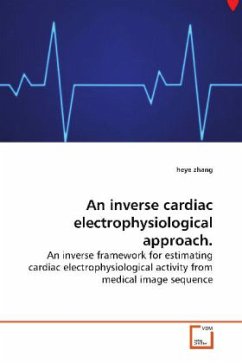Noninvasive estimation of myocardial electrical
activity traditionally used potential measurements on
the human body surface, such as body surface
potentials(BSPs, pl.) or electrocardiograms (ECGs,
pl.). But because of non-unique mapping between
myocardial electrophysiological activity and sparse
body potential measurements, the performances of
previous efforts have not been well accepted. In this
book, a different aspect to understand myocardial
electrophysiological activity is established for the
first time: since the mechanical activity of the
myocardium is mainly driven by myocardial
electrophysiological activity, patient-specific
myocardial kinematic measures should, indirectly,
reflect the propagation of cardiac transmembrane
potential(TMP). Coupling the physiological modeling
of myocardial electro-mechanical behavior on the
meshfree particle representation, my proposed inverse
approach recovers myocardial electrophysiological
activity from medical image sequences through
regularization or Kalman filter with favor results.
activity traditionally used potential measurements on
the human body surface, such as body surface
potentials(BSPs, pl.) or electrocardiograms (ECGs,
pl.). But because of non-unique mapping between
myocardial electrophysiological activity and sparse
body potential measurements, the performances of
previous efforts have not been well accepted. In this
book, a different aspect to understand myocardial
electrophysiological activity is established for the
first time: since the mechanical activity of the
myocardium is mainly driven by myocardial
electrophysiological activity, patient-specific
myocardial kinematic measures should, indirectly,
reflect the propagation of cardiac transmembrane
potential(TMP). Coupling the physiological modeling
of myocardial electro-mechanical behavior on the
meshfree particle representation, my proposed inverse
approach recovers myocardial electrophysiological
activity from medical image sequences through
regularization or Kalman filter with favor results.

